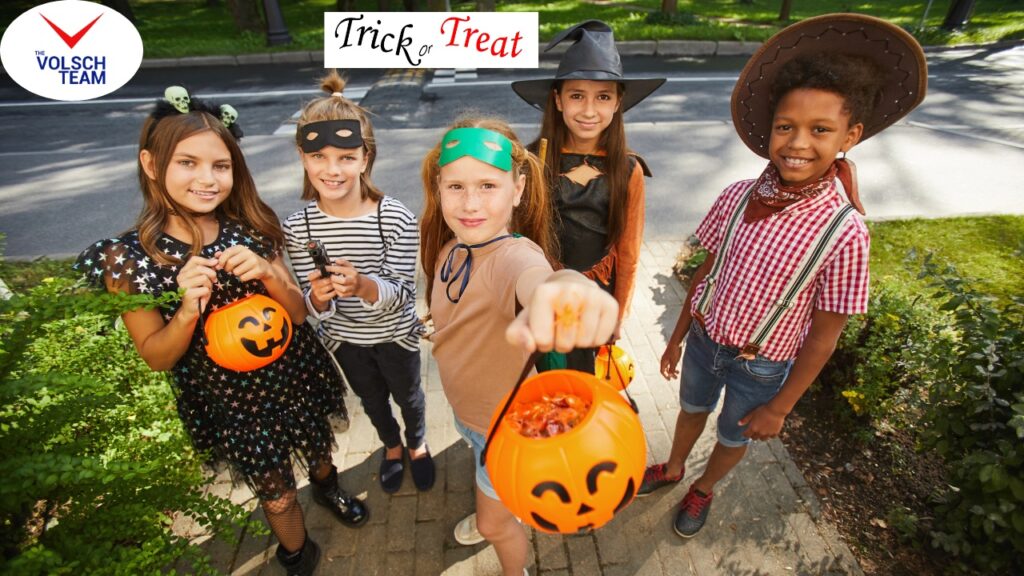Staying Safe
- Kids should stay outdoors when trick-or-treating or attending a Halloween gathering.
- Kids should keep in small groups while walking and when treats are given out.
- Suggest that your child takes turns with friends when approaching homes.
- At your home:
- Consider sitting outside when you give treats.
- Prepackage treats and have them ready to hand out.
- You also can put treats at the end of your driveway or on a sidewalk for trick-or-treaters to take.
- Make sure your kids wash their hands after trick-or-treating.
Dressing Your Little Ghouls & Goblins
- Choose a light-colored costume that’s easy to see at night. Add reflective tape or glow-in-the-dark tape to the costume and to the trick-or-treat bag.
- Only buy costumes labeled “flame-retardant.” This means the material won’t burn. If you make your own costume, use nylon or polyester materials, which are flame-retardant.
- Make sure wigs and beards don’t cover your kids’ eyes, noses, or mouths.
- Masks can make it hard for kids to see and breathe. Instead, try using non-toxic face paint or makeup. (I love this thought of getting creative and making it easier to see and breathe)
- Put a name-tag — with your phone number — on your children’s costumes.
- To prevent falls, avoid oversized and high-heeled shoes. Make sure the rest of the costume fits well too.
- Make sure that any props your kids carry, such as wands or swords, are short and flexible.
Trick-or-Treating Basics
For all kids:
- According Safe Kids Worldwide, the risk of kids being hit by a car is higher on Halloween than on any other day of the year. So make sure all kids:
- walk on sidewalks on lit streets (never through alleys or across lawns)
- walk from house to house (never run) and always walk facing traffic when walking on roads
- cross the street at crosswalks and never assume that vehicles will stop
- Give kids flashlights with fresh batteries. Kids may also enjoy wearing glow sticks as bracelets or necklaces.(fun way of being safe too)
- Limit trick-or-treating to your neighborhood and the homes of people you know.
When kids get home:
- Help them check all treats to make sure they’re sealed. Throw out candy with torn packages or holes in the packages, spoiled items, and any homemade treats that weren’t made by someone you know.
Keep Visiting Ghouls Safe Too!
Make sure trick-or-treaters are safe when visiting your home too. Remove anything that could cause them to trip or fall on your walkway or lawn. Make sure the lights are on outside your house and light the walkway to your door, if possible. Keep family pets away from trick-or-treaters, even if they seem harmless to you.
Halloween Goodies — What You Give Out and What Kids Get
- Make Halloween fun for all — including kids with food allergies. Consider buying Halloween treats other than candy. Stickers, erasers, crayons, pencils, coloring books, and sealed packages of raisins and dried fruits are good choices.
- As you inspect what your kids brought home, keep track of how much candy they got and store it somewhere other than their bedrooms. Consider being somewhat lenient about candy eating on Halloween, within reason, and talk about how the rest of the candy will be handled. Let kids have one or two treats a day instead of leaving candy out in big bag
In A Nutshell …
Making Halloween fun by being creative and weaving in safety has the best results.

